Monstera is the name of a genus in the family Araceae, which consists of 45 species of flowering tropical plants with large perforated leaves. Let’s take a look at its origin, interesting facts and types of monstera.
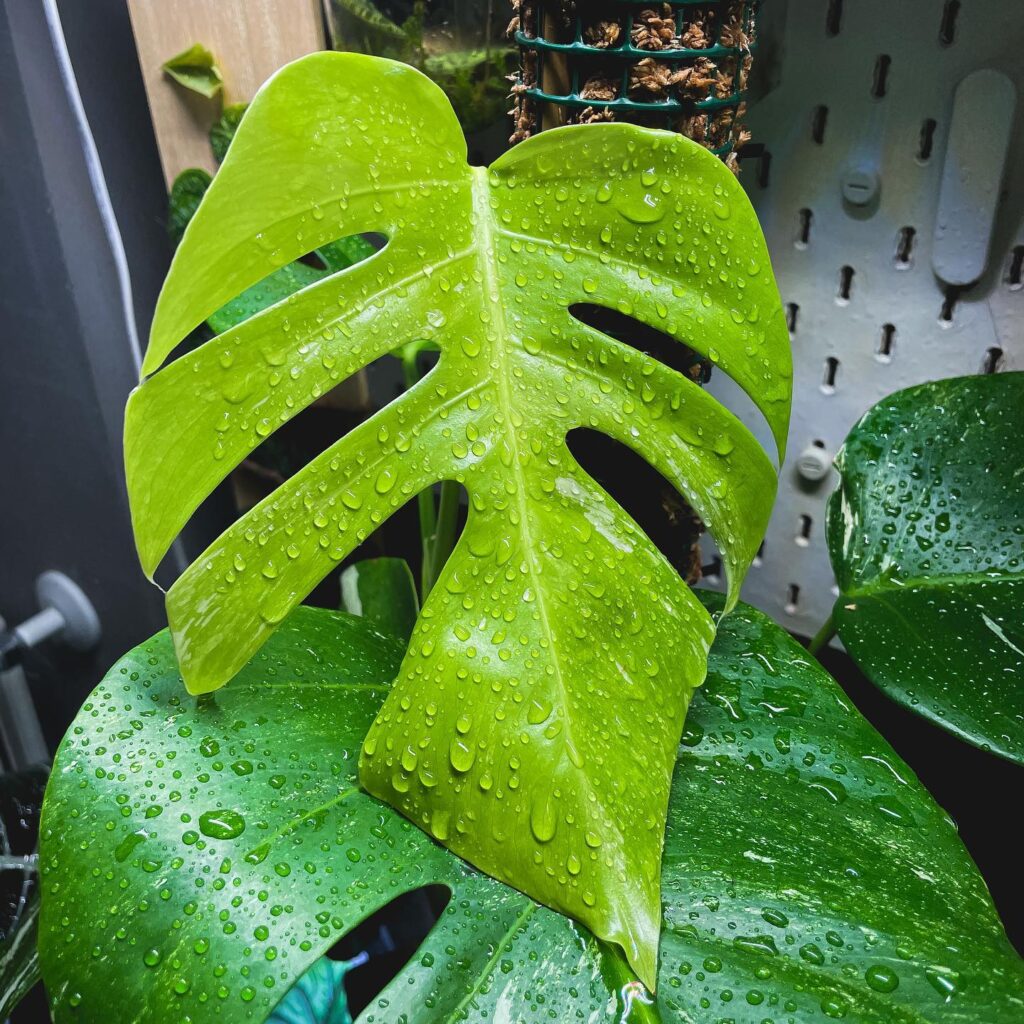
Monstera Origin
The homeland of the monstera is the tropical region of Central and South America, mainly Peru and Southern Mexico.
The French botanist Charles Plumier discovered and described the plant back in 1963, and its scientific name comes from the Latin word abnormal or monstrous, suggesting its large leaves.
In addition to the scientific name, the name Swiss cheese plant is also common, and sometimes you can find the plant under the name Split-leaf philodendron. The other common names include Mexican breadfruit plant and Swiss cheese vine.
Monstera Growing Habit
Young specimens begin their life cycle as stand-alone erect plants on the ground. At this stage, the young monstera plant does not look much like an adult monstera since it has whole, heart-shaped leaves.
However, as the plant matures, it needs more and more light, which causes stretching upwards.
Then, on a thick stalk under the plant nodes, aerial roots develop as the specialized organs that help the plant climb.
In addition to gripping, aerial roots also serve as collectors of additional moisture and food from the environment.
Further, the plant grows as an epiphyte supported and attached to the host. In nature, these are usually trunks of tall tropical trees. Indoor, the monstera plant needs a moss pole or some other type of support with which to climb.
Monstera Flowers and Fruits
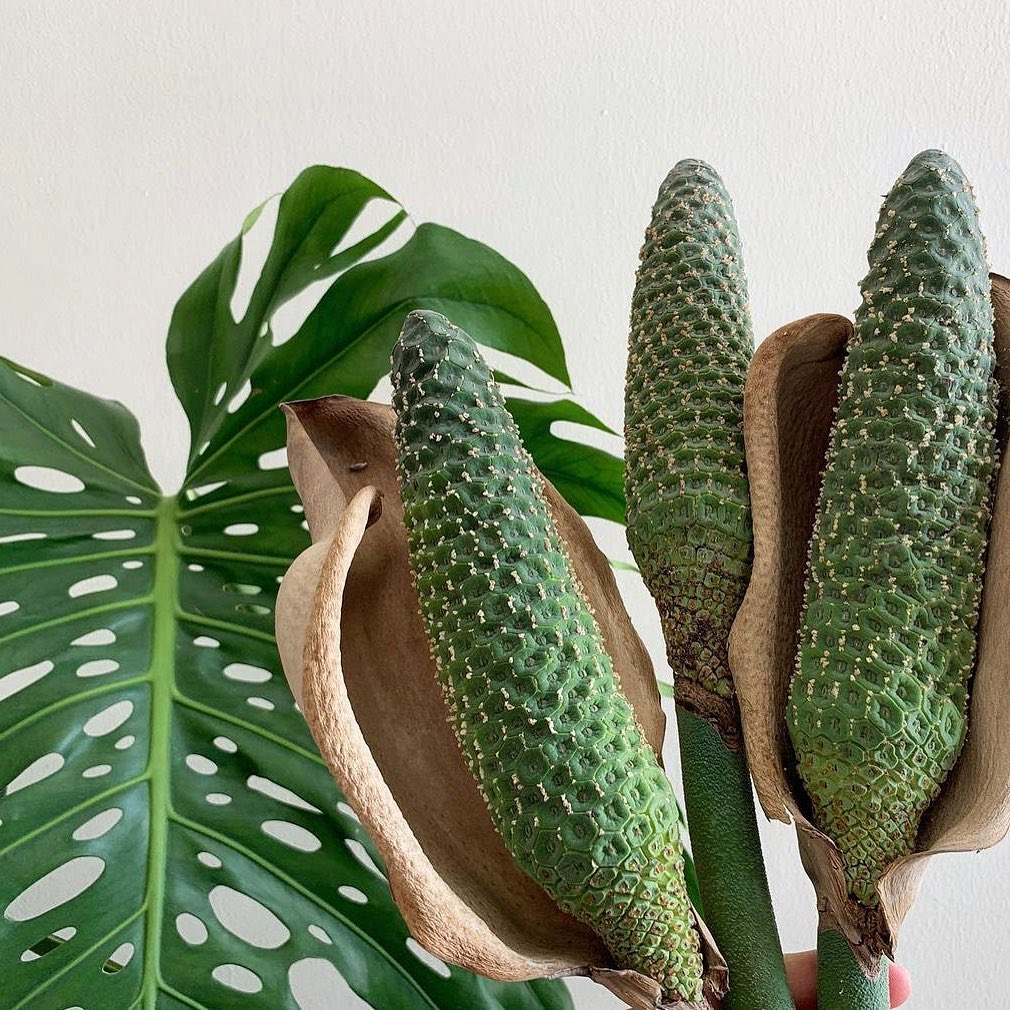
Monsteras are flowering plants, but they are unlikely to bloom when grown indoors. The flowers are cone-shaped, resembling a Calla flower surrounded by a large white or a pale green bract.
After pollination, the plant produces fruits resembling a juicy corn cob that is edible in some species and tastes like pineapple, passion fruit, or mango.
Monstera Size and Growing Rate
Some monstera species can grow into impressive 60-foot-long vines in their natural environment. Even indoors, some monsters like Monstera deliciosa can grow 10 to 15 feet high and stretch to eight feet, so it is a plant that you need to provide plenty of space.
However, not all monsters are giants that will occupy your living room! Some monstera varieties are enchanting sizable plants that you can even grow as a trailing plant in a hanging basket.
Yet, regardless of type, monstera is generally a fast-growing plant, and you can expect them to grow one to two feet in one season from spring to fall!
Why Does Monstera Have Perforated Leaves?
Plants from the monstera family are recognizable by their unique deep serrated or perforated leaves. However, the unusual form is not only the product of the infinite creativity of Mother Nature but is the creation with purpose. Namely, slits and holes help the plant resist strong blows from tropical rains. Large raindrops pass through the leaves in this way, reducing potential damage to a minimum.
Types of Monstera
1. Monstera Deliciosa
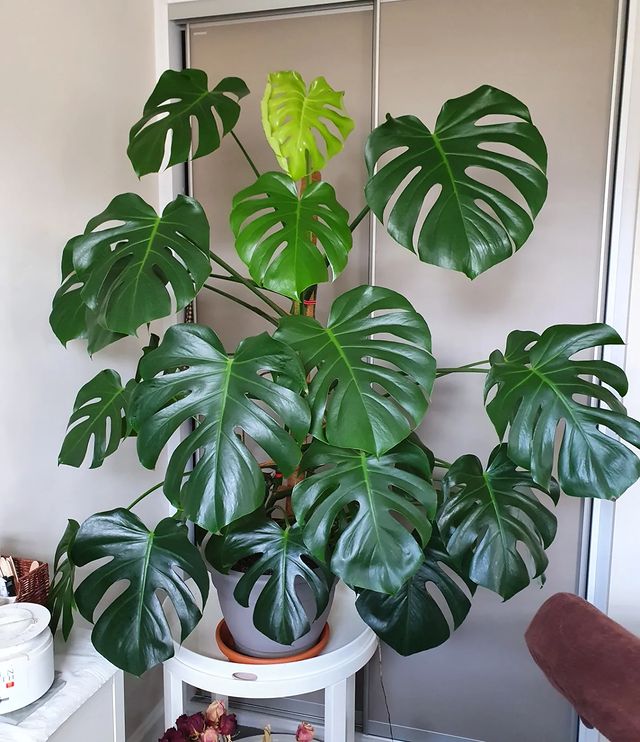
Of course, the most famous representative from the monstera plant family is the Monstera Deliciosa. This creeping, perennial houseplant is a ubiquitous decoration for interiors due to its unusual foliage and the fact that it does not require much maintenance. You certainly can’t go wrong by choosing this monstrous lush greenery if you want to bring a bit of tropical atmosphere to your home or office.
Large, exuberant deep green leaves grow from the long stems. The leaves of juvenile plants are usually not perforated, while mature plants are decorated with holes and splits that look like they’ve been cut with scissors from the midrib to the outer edge of the leaf. This slitting of the foliage, combined with its immense vertical and horizontal size, is the easiest way to distinguish Deliciosa from other monstera varieties.
Mature Monstera Deliciosa produces edible fruit, called Mexican breadfruit explaining the epithet “deliciosa”. Yet, the indoor plants rarely bloom and produce fruits.
2. Monstera Adansonii
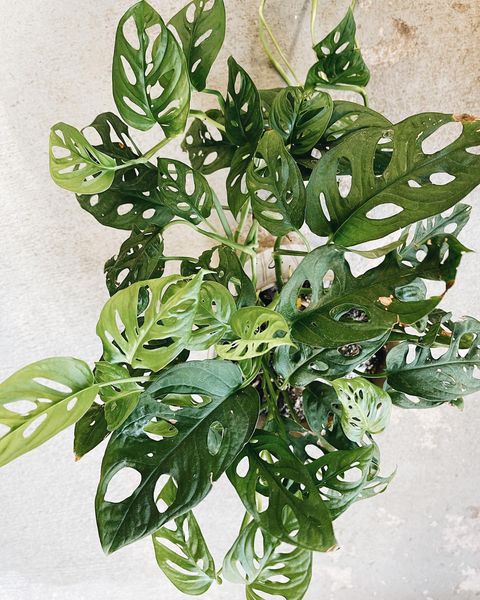
Monstera Adansonii, or Five holes plant, is next in our series of alluring monstera plants that feature uncommon-looking leaves.
This monstera variety is also known as the Swiss cheese plant, although you should not mix it with Monstera Deliciosa, which is also often called the Swiss cheese plant.
While Deliciosa’s leaves have cuts and splits, Adansonii has characteristic oval holes that “occupy” about half the leaf area in an adult plant.
The size of the leaves is another way to tell them apart: Deliciosa’s dazzling, glossy green leaves can grow up to 30 inches in width, while Adansonii’s smooth-looking foliage reaches at most 18 inches.
Swiss cheese plant is not demanding when it comes to caring.
However, avoid exposing it to direct sunlight since its textured and ovate leaves are thin and delicate and can be easily scorned.
In its natural environment, Monstera Adansonii is a climbing vine, so don’t forget to provide it with a moss pole on which it will be able to climb.
Cascading down from a shelf or a hanging pot, Adansonii is equally charming: if you don’t put any support on it, it will naturally, after a while, take on the appearance of a trailing plant.
RELATED: Monstera adansonii: The Complete Care, Propagation, and Watering Guide You Need
3. Monstera Peru (Monstera Karstenianum)
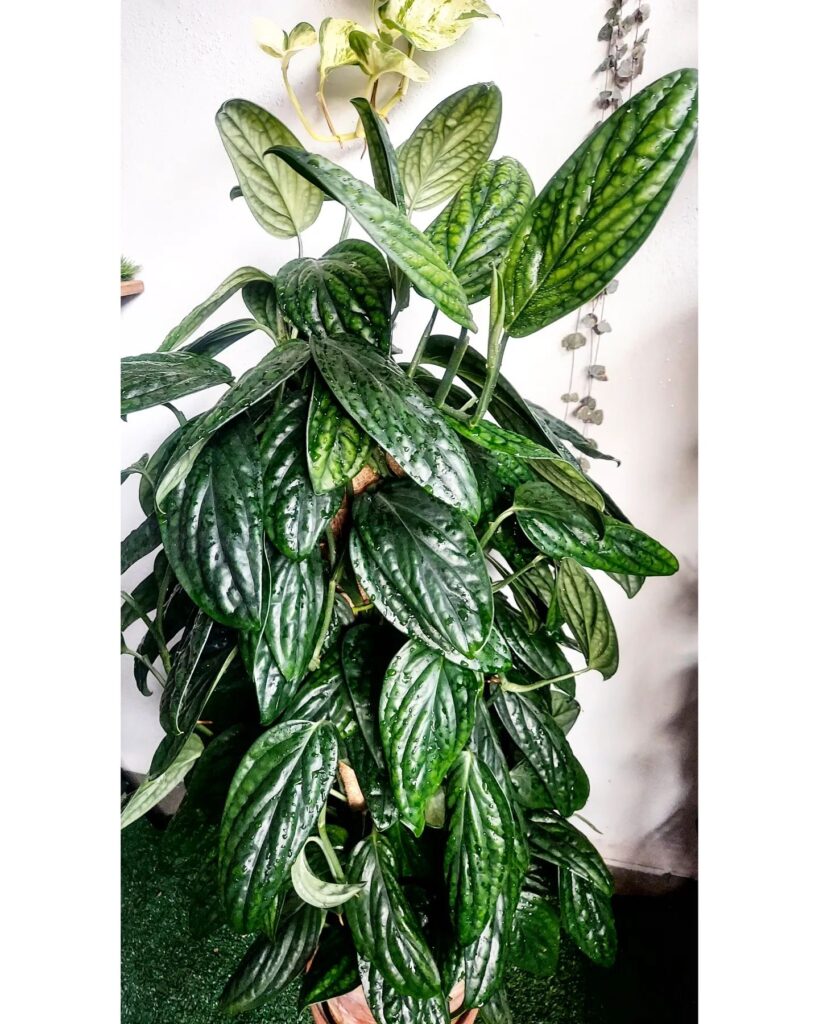
To anyone who has seen the dramatically perforated foliage of the most popular types of monstera such as Deliciosa or Adansonii, it is clear why they sought-after plants.
However, Monstera Peru is an excellent example that a monstera can be attractive even without the fenestration.
This somewhat rare species of monstera is easily recognizable by its textured leaves with gorgeous emerald green color and pronounced veins.
Monstera Peru, also called Monstera Karstenianum, is one of the more tolerant varieties when it comes to caring – its succulent-like, darkish and thick leaves don’t need frequent watering and are more susceptible to low-light conditions. Therefore, north-facing windows are definitely the best choice regarding the placement of this plant.
Rigid and thick leaves that grow to a maximum of four inches are not particularly large compared to the leaves of other monstera plants. However, if you take proper care of Monstera Karstenianum, with its 6 to 8 feet length, this climbing beauty will transform any part of your house into a mini indoor botanical garden.
4. Monstera Pinnatipartita
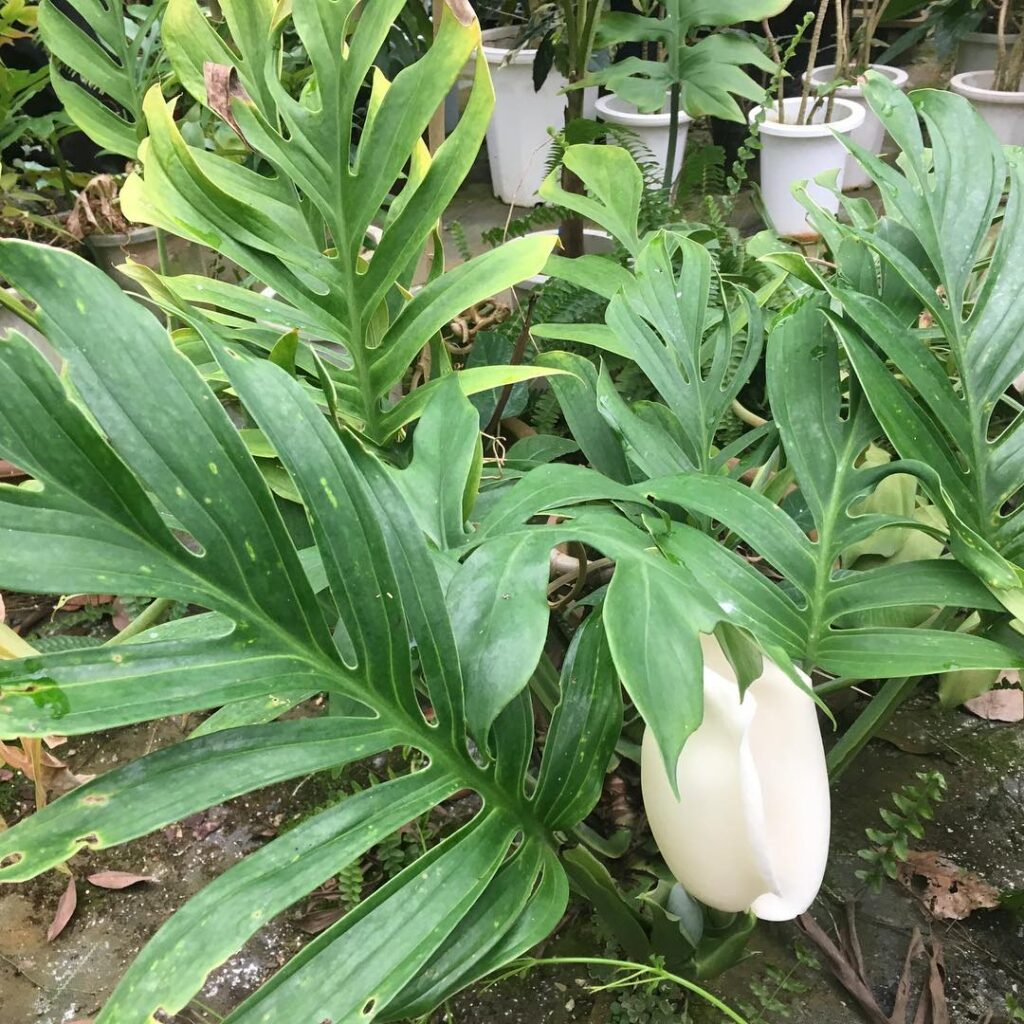
If you thought M. Deliciosa’s foliage was dramatic, wait until you see an adult Monstera pinnatipartita: the transformation experienced by this plant’ leaves from its juvenility to maturity is even more drastic and breathtaking.
The young plant’s small, deep green oval-shaped leaves have a couple but usually no holes. However, as the plant matures, the fenestration becomes more pronounced, and deep splits that reach all the way to the midrib begin to develop. Finally, the separation reaches such a level that it looks like the plant has several distinct dark green leaves arranged on both sides of the midrib.
Pinnation is actually a characteristic of a leaf with leaflets arranged or partitioned on each side of a common axis, explaining the plant’s name Pinnatipartitata.
This rare, evergreen tropical plant, also called Philodendron silver queen, can reach up to 66 feet in its natural environment. However, at home, with proper care, Monstera pinnatipartita will reach a maximum height of six feet, so do not forget to provide support in the form of a moss pole or something similar.
RELATED: Monstera pinnatipartita: The Best Care, Propagation, and Watering Guide You Need
5. Monstera Siltepecana
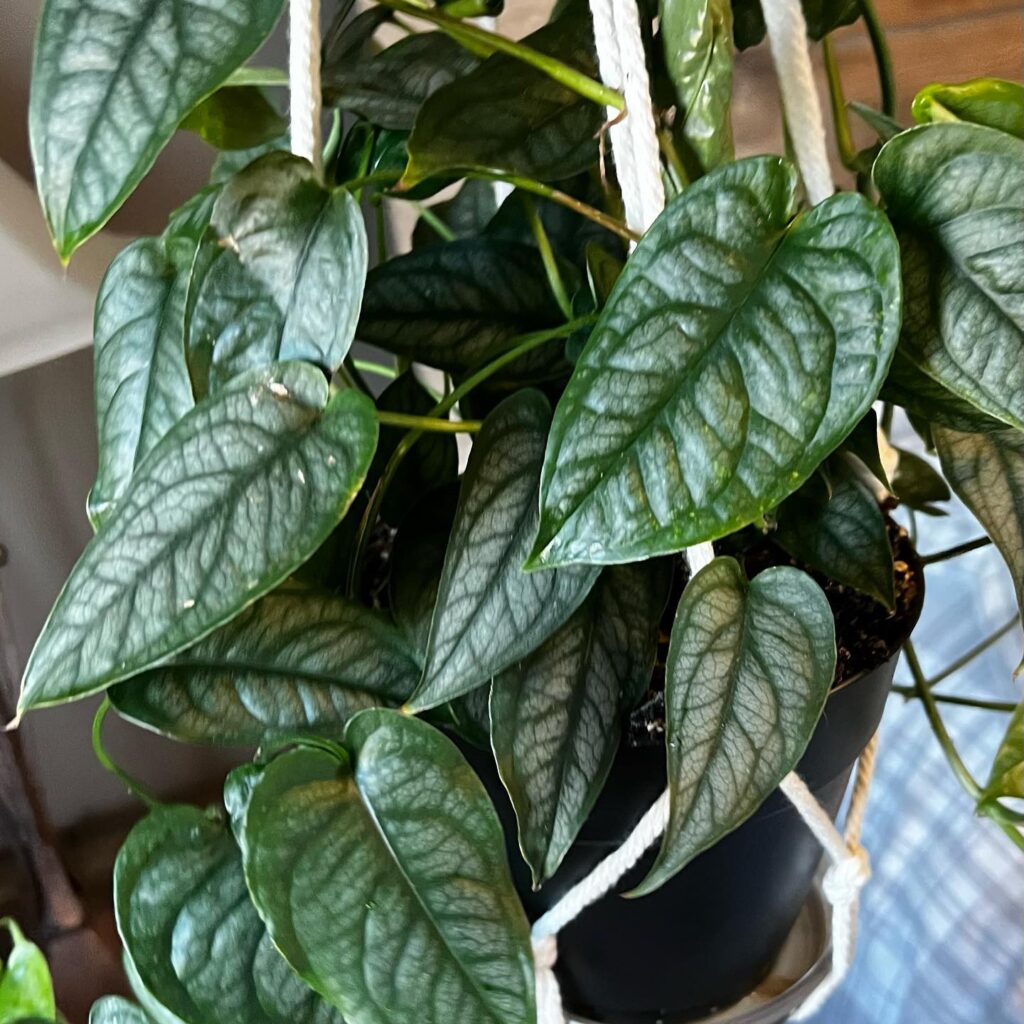
Next on our list of monstera plants is the Monstera siltepecana, also known as the Silver monstera.
Its pointy leaves have pronounced dark green veins with a silver-gray sheen. Apart from the distinct color of the foliage, which gives this species a unique charm in the monstera genus and is the biggest reason to grow it, M. Siltepecana’s leaves differ in juvenility from those in maturity.
The young Silver monstera that grows in its natural environment shows no signs of fenestration. In this respect, it is more like Monstera Peru than other relatives of the monstera genus.
Yet, after two to three years it takes to reach maturity, this plant’s leaves will develop holes in their leaves.
When grown as a houseplant, Monstera siltepecana will rarely develop holes, but this should not prevent you from decorating your home with this fantastic monstera and its deeply veined lush leaves.
6. Monstera Dubia
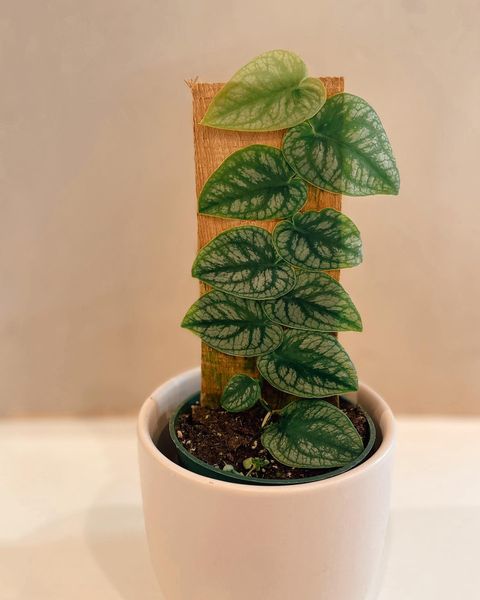
What makes Monstera Dubia different from other types of monstera plants is not only its variegated leaves but also the way its foliage behaves as the plant climbs up trees: the leaves stick to the surface they grow on, giving it a flattened, shingle-like appearance – hence its other name, Shingle plant. Therefore, you need to support Monstera Dubia with a flat wooden plank and let it stick to it leaf by leaf.
At the beginning of their life, leaves are small, heart-shaped, and feature dark and light, almost silvery-green variegation.
In their mature form, however, the leaves become more oval and are only dark green, and similar to Monstera Siltepecana, they start to develop fenestrations. But just like in Monstera Siltepecana, this process is rarely seen in indoor plants.
Although it is not such an easy monstera species to find, do not worry about its care if you get your hands on one! It does not ask for much – indirect sunlight, humidity over 50%, and watering only when the top one or two inches of soil dries are some of its essential requirements – easy enough regardless of your experience as a plant grower.
7. Monstera Obliqua
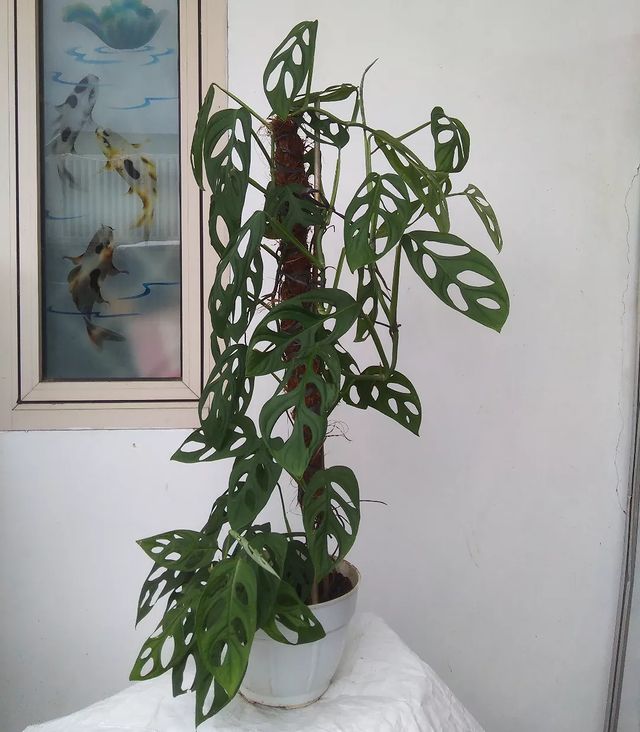
What graces most types of monstera plants is fenestration, i.e., their typical splits and holes in the foliage. It is because of this process that monsteras are so popular. However, the Monstera Obliqua takes this to a whole new level. The holes on the mature Obliqua are so large that they “cover” most of the leaf surface.
However, this is also why this species is often mixed with Monstera adansonii. At first glance, they are similar, with identical oval leaves full of holes.
But while the holes-leaf ratio is approximately 50% – 50% in Adansonii, in Obliqua, this ratio can go up to 90% – 10%, making it one of the most unusual plants in the world.
Moreover, Monstera obliqua grows very slowly (this is one of the reasons why it is a hard variety to come by). Therefore, it takes years to develop the extremely high fenestration that distinguishes it from Adansonii.
Suppose you decide to add this unusual monstera plant with fragile and delicate foliage to your houseplant collection. In that case, you should know that Monstera Obliqua is also one of the most expensive monstera varieties, as this rare species could cost thousands of dollars.
8. Monstera Acuminata
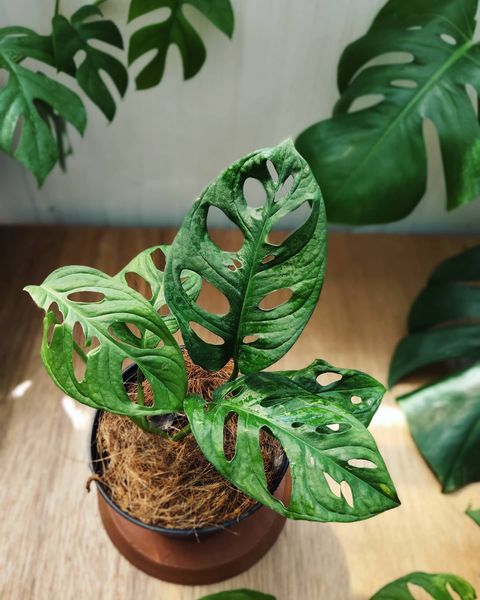
At first glance, the Monstera Acuminata is very similar to the Monstera Adansonii, and it is not easy to distinguish them. However, Monstera Acuminata has smaller and narrower leaves that grow four to 10 inches long and four to six inches wide.
The leaf shape is oval and slightly longitudinally curled inward, and their tips are not pointed as in some other monstera varieties.
The plant has dark green leaves with dark green veins and many smaller and irregularly distributed holes on the leaf blade.
9. Monstera Borsigiana
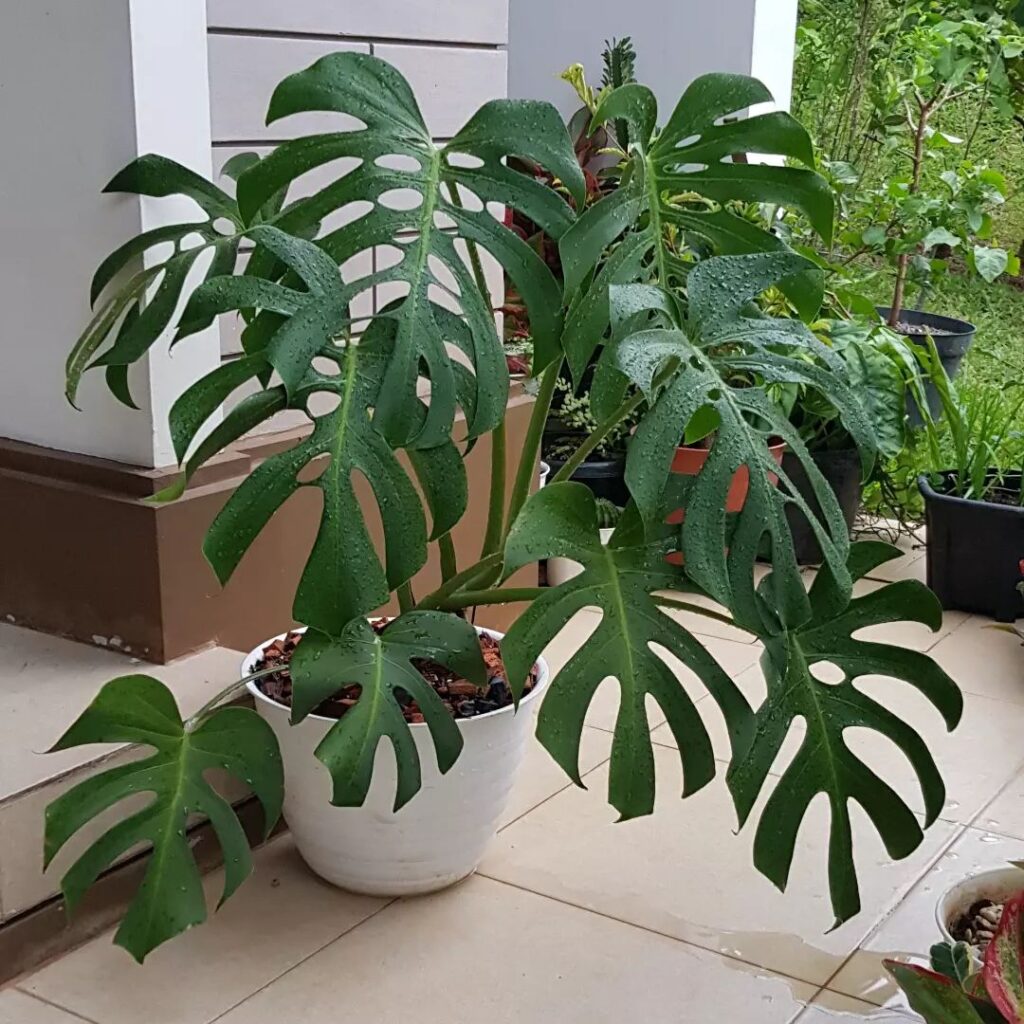
There is a lot of “controversy” about this tropical plant because it looks so much like Monstera Deliciosa that many people claim it is not a separate species but the same plant and that Monstera Borsigiana is just a synonym for M. Deliciosa. On the other hand, some will say that Borsigiana is a subspecies or a cultivar of Deliciosa. Either way, its alternative names, M. Deliciosa small form and climbing form give us hints on distinguishing between these two plants.
While the leaves of M. Deliciosa can reach up to 40 inches in length, Monstera Borsigiana cannot develop large foliage but “only” up to 20 inches. Besides that, M. Borsigiana shows signs that are more characteristic of climbers since it likes to grow vertically, while M. Deliciosa develops in width.
Another dissimilarity is the foliage shape – Monstera Borsigiana leaves follow a more ovate outline, while Deliciosa has more of a circular outline.
Finally, there is a difference in the plant’s growth rate. It is believed that M. Borsigiana grows much faster, developing new leaves more often than M. Deliciosa.
Whatever the truth about these two monstera varieties, both of them sport slits and holes on their sizable leathery foliage, which we believe is most important to those who want to grow monstera plants.
10. Variegated Monstera Plants

These monstera plants stand out from the rest of the family with their pigment. The leaves look like they’ve been dipped in paint or dyed with a paintbrush – truly unreal sights. Another thing they have in common is that they are rare and harder to care for than “ordinary” monsteras, which is why their price is also not in the same range as other monstera species.
11. Monstera Deliciosa Thai Constellation
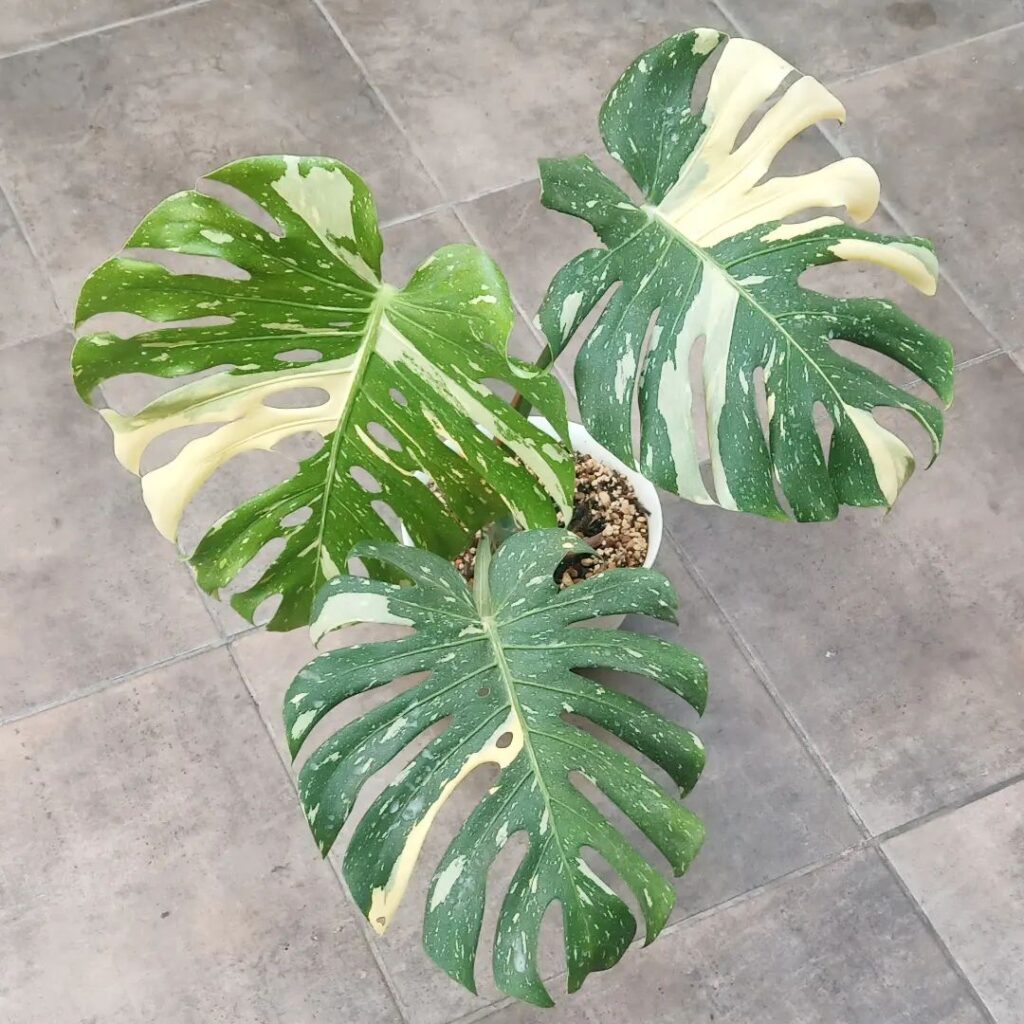
As if the “normal” Monstera Deliciosa wasn’t spectacular enough, the yellow-to-white galaxy-like splotches covering the leaves of the Monstera deliciosa Thai Constellatio’ will surely make you at least check to see if you have somewhere to order it from. But fear not because this species is the most widespread of all variegated plants in the monstera family.
RELATED: 13 Types of Monstera To Boost Your Surroundings With Extravagant Greenery
12. Monstera Deliciosa Variegata
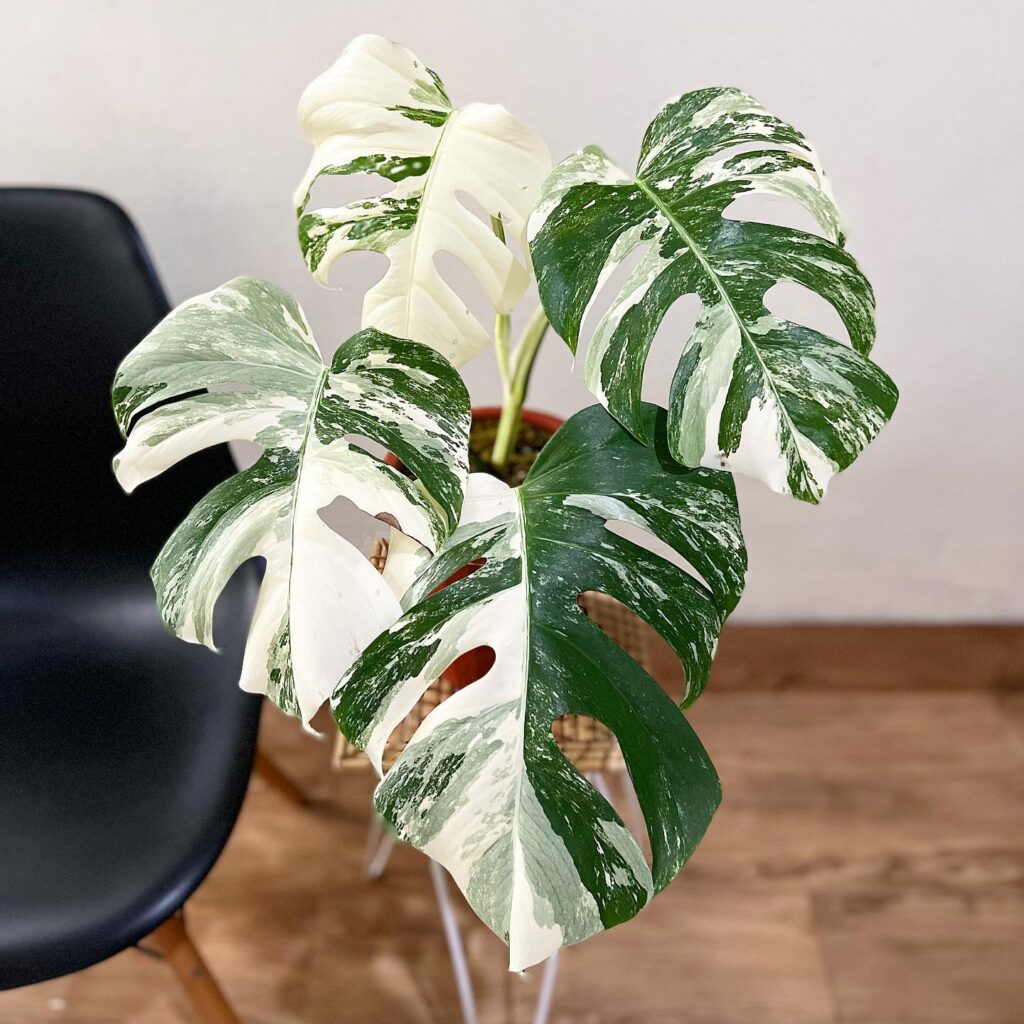
Unlike M. Deliciosa Thai Constellation, which was genetically engineered in a laboratory in Thailand and for which it was named Thai, Monstera Variegata owes its uniqueness and charm to a mutation. Since mutation occurs randomly but naturally, this subspecies of Monstera Deliciosa is considered its proper variegated form.
However, as the mutation cannot be predicted, it is impossible to know its character: while the color can be white/cream, light green, or even yellow, the mutation itself can be less visible or cover almost the entire leaf.
Therefore, it is easy to see why this subvariety is so hard to come by from all this. But that does not stop us from admiring the pictures of Monstera Variegata that we see on Instagram and hope that we will be able to decorate a corner of our living space with this charmer one day.
13. Monstera Adansonii Variegated
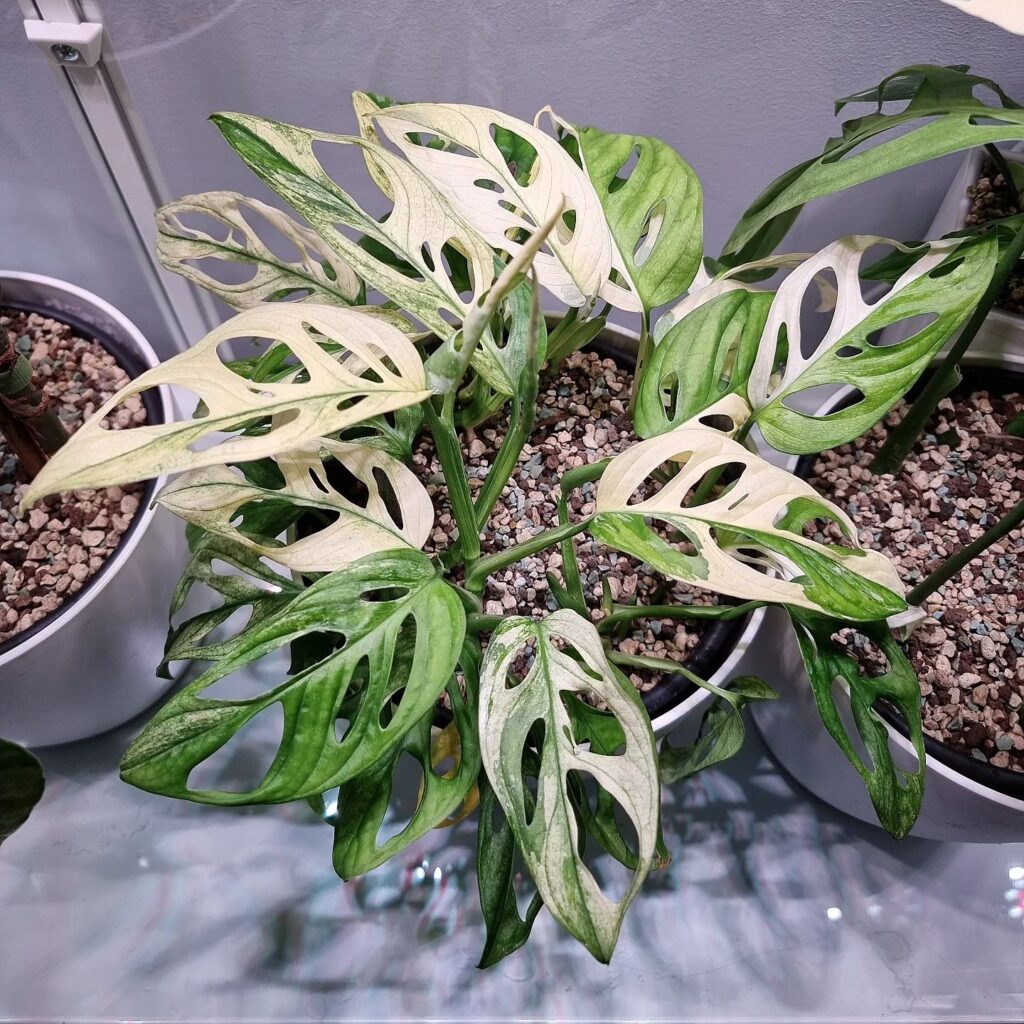
The rare variegated Adansonii delights with elegant perforated leaves and patterns in cream-white, yellow, and green shades.
And while the green version can mutate and give a few interspersed leaves, the variegation in this species is constant without the ability to revert into green leaves.
It is a fast-growing species but also a species that requires much more attention than most other monsteras. The delicate leaves contain less chlorophyll, so it is more sensitive to inadequate lighting.
On the other hand, it cannot stand the direct sun, so finding a suitable place for the plant can be puzzling.
However, due to its exceptional decorative value, the plant is trendy among collectors and worth the effort!
14. Monstera Standleyana
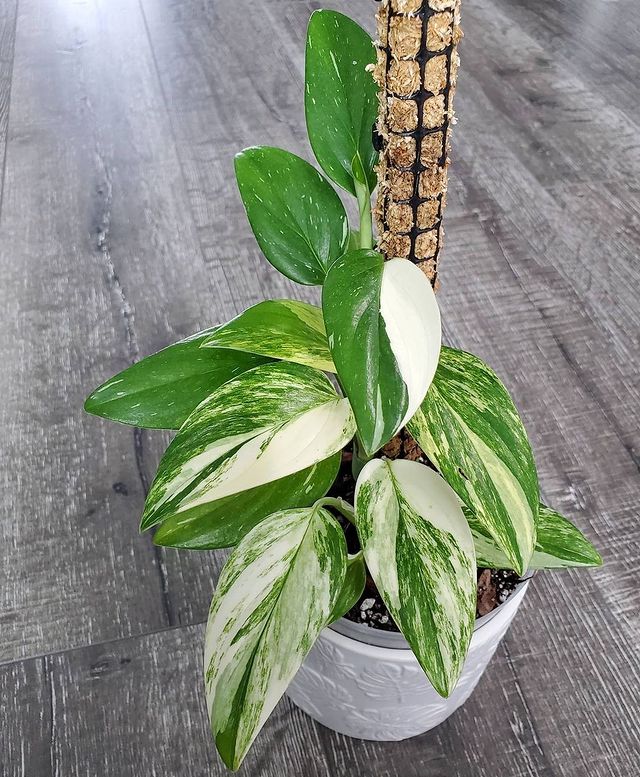
Last on our list of monstera plants with variegated leaves is an impressive climber that is native to the tropical forests of Central America and Columbia – Monstera Standleyana. It is characterized by upright, oblong leaves with varying degrees of variegation.
Monstera Standleyana Green Form’s glossy foliage feature some small spots and speckles of white and is the less variegated one. On the other hand, prominent, creamy white or yellow stripes and streaks. This can be seen on Monstera Standleyana Albo Variegata’s leaves, which definitely make it the center of attention wherever you put it.
Mature plants of either of these variations don’t boast deep cuts or large oval perforations typical of monsteras. Which means you will enjoy them in their “fullness”.
If you are able to enrich your houseplant collection with this exotic monstera (or other types of variegated monstera plants). Keep in mind that due to the lack of chlorophyll in the leaves, it has slightly higher light requirements.
Frequently Asked Questions
Which monstera is easiest to grow?
Monstera adansonii is one of the most accessible varieties to grow. However, in general, monstera plants are not particularly demanding, apart from a lot of space. These plants do not require much effort.
What is the rarest monstera plant?
While there are many monstera plants that are considered rare. The rarest ones are Monstera Obliqua and Monstera Deliciosa Variegata.
Is Mini monstera a real monstera?
Due to its resemblance to the Monstera deliciosa, Rhaphidophora tetrasperma is often called Mini monstera. However, this plant does not belong to the monstera genus but is a part of the Rhaphidophora plant family.
Is monstera toxic?
Yes, it is! Like all plants from the Araceae family, the plant contains calcium oxalate, which is toxic for pets and humans.
Is monstera an air-purifying plant?
Yes! In research done by NASA, monstera proved to be very efficient in the absorption of benzyne, formaldehyde, and other toxins.
After learning about the types of monstera, read our tips on how to take care of them:
A Yellow Nightmare: 7 Reasons Why Your Monstera Plant Is Changing Color







